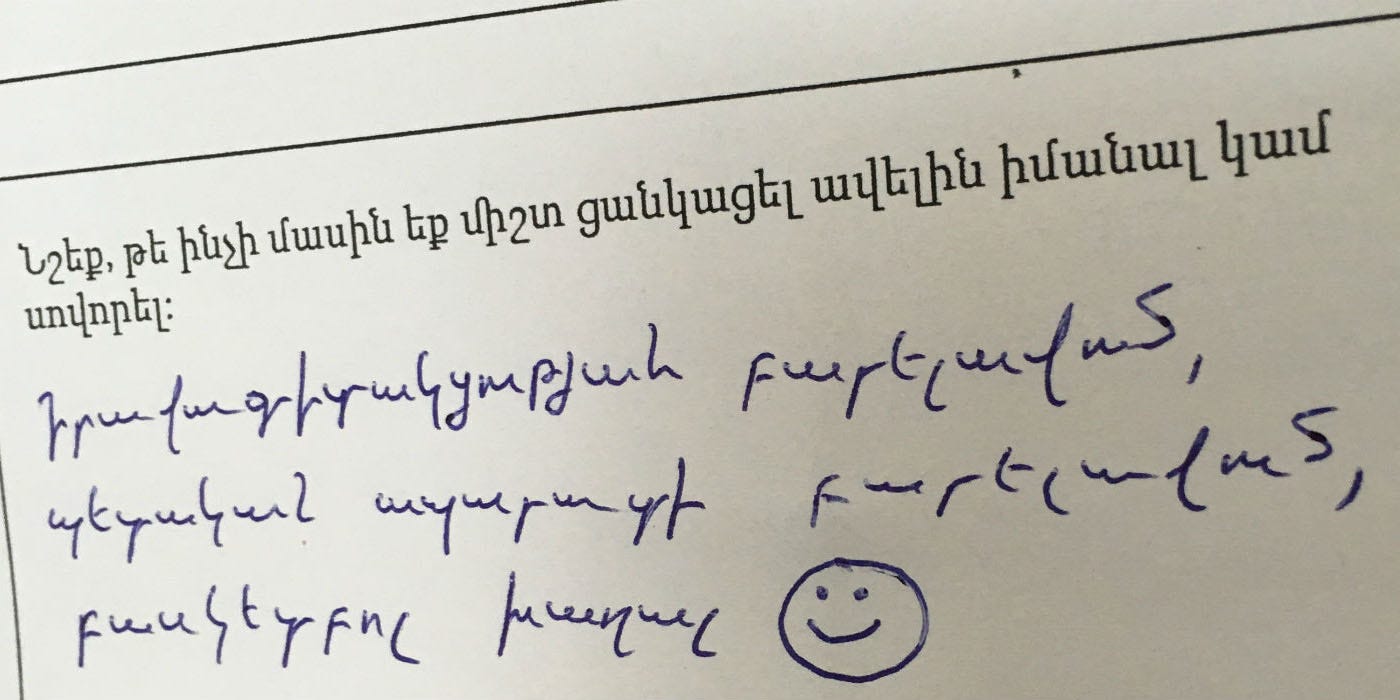How human-centred design will help governments do more with less

Trust between citizens and government is going down. Maybe it’s time to reformulate what government is.
– Civil servant, Armenian government
We recently spent a week prototyping #Inno4Dev, a collaboration between UNDP Armenia and the EU that will introduce human-centred design to the Armenian government, encouraging civil servants to be more entrepreneurial in innovating better, cheaper public services for the Armenian government and citizens.
During our time in Yerevan, everyone we spoke to knew it was time to do things differently to spark growth and development. In fact, progressive government leaders are already creating cultures where taking risks is rewarded. They’re embodying an old Armenian aphorism, one that makes the argument for innovating:
“If you don’t work, you don’t make mistakes” (meaning: “failure is a good thing”).
For all the good work, though, there is scepticism among civil servants. One of the biggest barriers is the fear that human-centred design won’t be able to solve the problems Armenia faces. But Kolba Lab, the EU and FutureGov believe design thinking, research, and prototyping are the fundamental elements of innovation. Involving citizens in the design and testing of ideas leads to new solutions that make radical, impactful changes at scale, and save money in the process.
For example, FutureGov recently helped a local government council in Greater London to design their council around users rather than departments, breaking down internal silos and merging services. Our strategy is to engage users early, rather than waiting until their problems grow too complex, in order to reduce the need for expensive, acute services. Through our human-centred design process, we identified:
- £40m+ savings across the council
- £6.5m direct savings in targeted services
We are currently leading the implementation of targeted service re-design.
The Armenian government can’t afford to miss out on the benefits of the human-centred design approach. For example, growing the economy is the government’s strategic priority — leaders aim to follow Israel’s example by supporting the tech start-up scene in Yerevan. But in order to do that, they need to remove the bureaucratic and financial hurdles to setting up a business in Armenia. Human-centred design could be crucial here: identifying the biggest problems, finding out what entrepreneurs actually want, and prototyping solutions, as a first step, is far less risky than building an entire programme at scale (and finding out it doesn’t work). Why waste public money on services that the public don’t want or can’t use?
Another barrier we identified to adopting human-centred design throughout the public service ecosystem is that in Armenia “innovation” tends to mean “technology”, which means building digital products for government and citizens to transact (for example, by paying taxes online). But there is more to innovation and human-centred design — they have the potential to radically reshape services and ask whether we’re actually offering the right transactions in the first place.
Human-centred design can even be used to rethink the organisation of government itself to establish the right environments for innovation in public services to flourish. For example, where will the “serendipitous personal encounters” (as described by Apple’s Steve Jobs) that are essential to innovation happen? We observed that Armenian civil servants sit alone in their offices, complete with individual kettles and snacks that act as barriers to socialising with colleagues. What if the currently rather empty corridors (of power) housed coffee machines — a reason to come together, talk and share ideas?
While there may be challenges to human-centred design taking root in Yerevan, there is also deep policy expertise, as well as a passion to make government more open and transparent. We encourage the Armenian government to seize the opportunity that #inno4dev presents: a supportive partnership with UNDP Armenia, EU and FutureGov to experiment with better, cheaper ways of delivering public services, and perhaps in the process, achieving more open, collaborative decision-making with the citizens of Armenia.
FutureGov will be back in Yerevan in Autumn 2017 to further support the Kolba team in their ambitions. In the meantime, let us know of any examples of human-centred design in Armenia by tweeting us at @emilyrosebaz and @simonecarrier using the hashtag #inno4dev.
Originally published at www.wearefuturegov.com on May 5, 2016.
On our second visit in Autumn 2017, the UNDP team made this video. So many post-its!
Read my report on scaling government innovation labs in emerging economies
